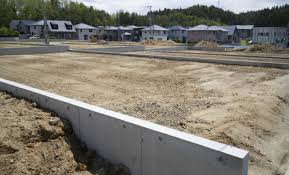Introduction
Site grading and drainage are fundamental components of any successful excavation project. They ensure that the land is prepared correctly and that water management systems are in place to protect the integrity of the construction. Proper grading and drainage contribute to the site’s stability and prevent long-term issues related to water damage. This article explores the significance of site grading and drainage, highlighting their roles in successful excavation projects.
The Importance of Site Grading
Site grading is a crucial step in the excavation process, as it ensures that the land is leveled and prepared for construction. Grading involves removing or adding soil to create a stable and even foundation. Proper site grading prevents soil erosion, uneven settling, and foundation cracking, which can compromise a building’s structural integrity.
Incorporating excavation in this process helps remove unsuitable soil and debris, thus creating an even surface for construction. Grading ensures the site slopes away from the structure to facilitate proper drainage. Without adequate grading, excess water can accumulate around the foundation, leading to water infiltration and structural damage.
Moreover, grading plays a significant role in landscaping and aesthetics. It allows for the creation of desirable landforms and supports vegetation growth. A well-graded site enhances the property’s visual appeal and contributes to its overall functionality and value.
Effective Drainage Systems
Effective drainage systems are essential to managing water flow on a construction site. Drainage helps divert water away from structures, reducing the risk of water damage and soil erosion. Proper drainage systems include gutters, downspouts, French drains, and surface grading to ensure water is directed away from critical areas.
Ensuring proper drainage during excavation is vital to avoid water accumulation, which can lead to flooding and erosion. Inadequate drainage can result in standing water, which poses health risks and creates a breeding ground for pests. Well-designed drainage systems protect the site from water-related issues and contribute to the longevity of the construction.
Drainage is not only about removing water but also managing it efficiently. Techniques like rain gardens, swales, and permeable pavements can be used to manage stormwater runoff sustainably. These methods help reduce the impact on local water bodies and promote groundwater recharge. Integrating effective drainage systems from the project’s outset ensures long-term site stability and lowers maintenance costs.
Enhancing Structure Longevity
Proper site grading and effective drainage systems play vital roles in enhancing the longevity of structures. Water is a significant factor in the degradation of building materials, and managing it effectively can prevent costly repairs and replacements. Grading and drainage help maintain the structural integrity of the building by ensuring that water is directed away from the foundation and other critical areas.
For example, water accumulation around the base of a structure can lead to foundation weakening and settling, causing cracks and other structural issues. Grading the site to slope away from the building and installing proper drainage systems can mitigate these risks. Additionally, water management practices help preserve landscaping and outdoor features, which poor drainage can adversely affect.
Investing in proper grading and drainage is much more cost-effective than dealing with the consequences of water damage after construction. It is a proactive approach that safeguards the structure and enhances its value and appeal. Long-term, well-maintained grading and drainage systems contribute to the overall durability and resilience of the construction project.
Compliance with Regulations
Compliance with local, state, and federal regulations is essential for excavation projects. These regulations set standards for grading and drainage to ensure environmental protection and public safety. Please comply with these regulations to avoid fines, project delays, and legal issues.
Regulatory bodies often require detailed plans outlining how grading and drainage will be managed on-site. These plans must demonstrate that the project will not negatively impact surrounding properties or natural resources. Working with well-versed professionals in these regulations ensures that the project meets all legal requirements.
Additionally, compliance with regulations often involves obtaining permits and undergoing inspections to verify that grading and drainage systems are correctly implemented. Adhering to these standards not only protects the environment but also enhances the credibility and reputation of the construction firm. Regulatory compliance is critical in achieving a successful and legally sound excavation project.
Planning and Execution
Effective planning and execution are essential for successful site grading and drainage. Comprehensive planning involves assessing the site’s topography, soil composition, and water flow patterns to design appropriate grading and drainage solutions. This step includes creating detailed plans and drawings that outline the proposed grading elevations and drainage features.
Execution involves the precise implementation of the grading and drainage plans. This process requires skilled operators and well-maintained equipment to ensure accuracy and efficiency. Continuous monitoring and adjustments may be necessary to address any unforeseen issues during excavation.
Communication and coordination among all stakeholders, including architects, engineers, contractors, and inspectors, are crucial for effective planning and execution. Clear communication ensures everyone is on the same page and promptly addresses any issues. The success of site grading and drainage ultimately depends on the meticulous planning and execution of these critical steps.
Conclusion
The importance of site grading and drainage in excavation projects cannot be overstated. These elements are fundamental to ensuring a stable and even foundation, preventing water-related damages, and enhancing the longevity of structures. Compliance with regulations and meticulous planning and execution are essential for successful site preparation. By prioritizing proper grading and drainage, construction professionals can achieve optimal results, safeguard the integrity of their projects, and contribute to the development of durable and resilient structures.






